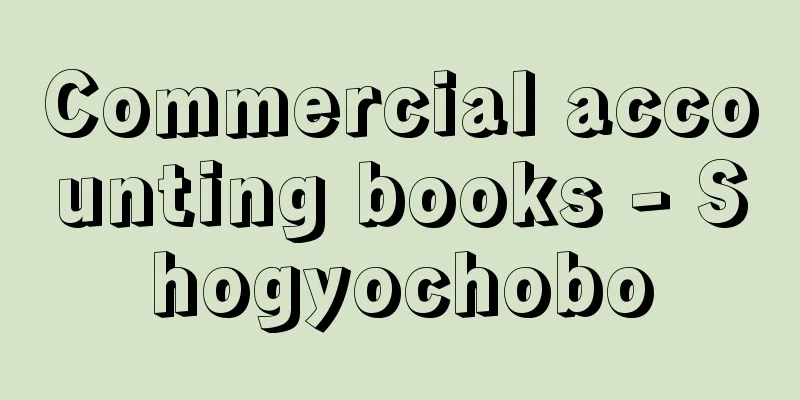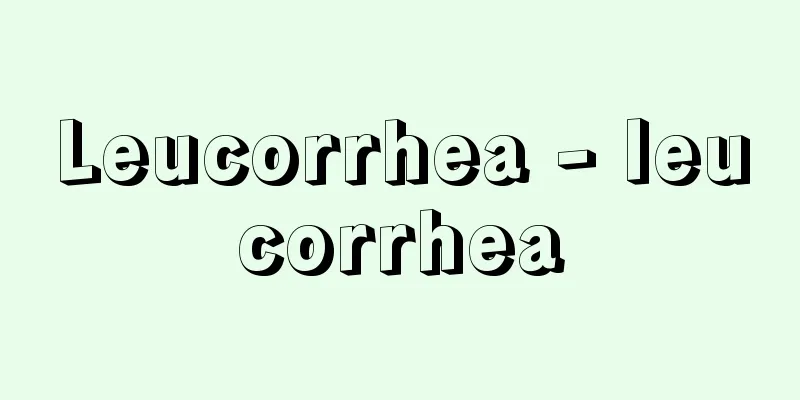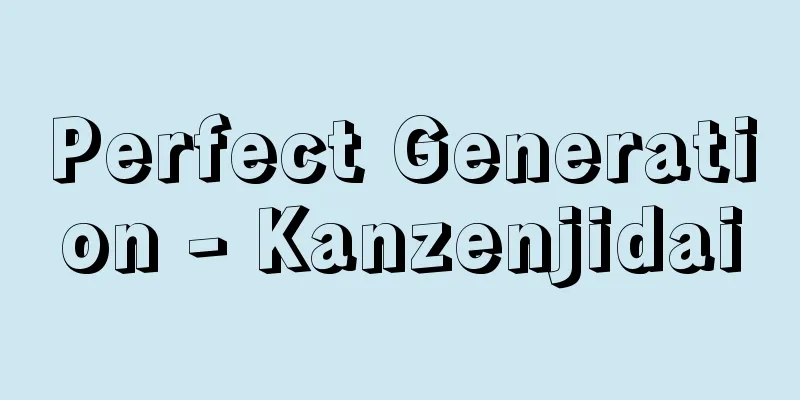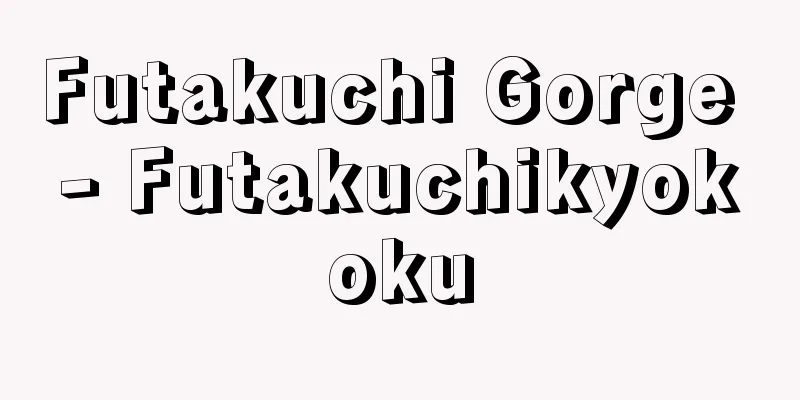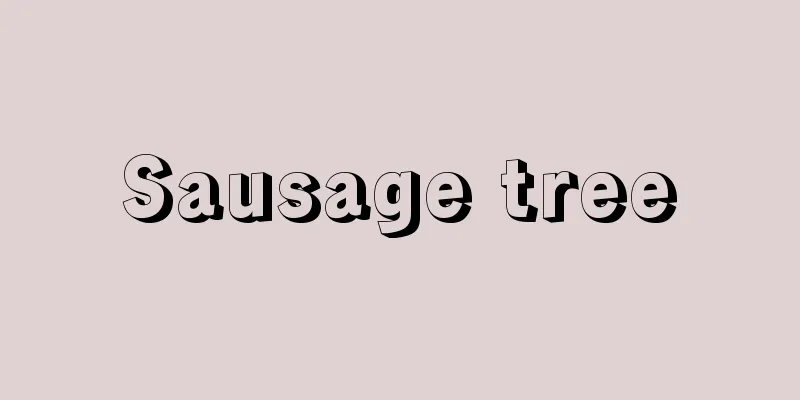Imagination - Souzouryoku (English spelling) imagination

|
Imagination is the ability to imagine things that cannot be seen. In addition to the reality that we can see, hear, and touch, we can create a world that we imagine as our own reality. We can know what is happening in front of us now by seeing and hearing, and we can know past events by recalling memories. However, we cannot imagine the future that we have yet to see by simply using our five senses and recreating experiences. Creating a representation of the future is the most important aspect of the function of the imagination. We use experience as material to imagine the future. However, imagination is based on experience, but it is not experience itself. When experience is processed, something new is added. Experience is reconstructed and transformed to fit the context in which it is reproduced. This is where the possibility of something new can be created. The process of "inaccurately" reproducing and reconstructing experience opens up new possibilities for creativity. Imagination guides our consciousness from the real world to the spiritual world. When the real world is in an extreme situation, it allows us to escape reality so that we do not have to face its harshness head on. The Australian psychiatrist VE Frankl was imprisoned in the Auschwitz concentration camp during World War II, but miraculously managed to survive. In extreme situations, humans are brutal and show their abhorrent primitiveness. When we become conscious of the future, our mental activity becomes active, moving away from the present that directly appeals to our senses. According to Frankl, even in extreme situations, people can still be conscious of the future and use their imagination. Moreover, only those who can escape reality in this way can maintain spiritual bliss and be given the strength to live. People do not live by bread alone. It was not bread, but imagination, a basic activity of the human mind, that gave Frankl the goal and hope to live in the harsh camp life. However, imagination does not only have positive aspects like these, it also has negative aspects. The use of imagination can result in the spreading of false rumors that mislead people's perceptions, or even the development of weapons that threaten human lives. However, meta-imagination (described below) comes into play when we foresee and evaluate these negative outcomes and make a decision. We can use meta-imagination to examine the results of our imagination and move forward into the future. [Emergence of symbolic function] Symbolic function refers to the mental function of creating and manipulating the representations of real objects (called "images" in everyday language). Imagination appears at the same time as symbolic function emerges. At the end of infancy (around 10 months to 1 year old), children are able to not only see the present world with their eyes and hear with their ears, but also to recreate and visualize their own experiences as representations in their minds. Playing with pebbles as food and building blocks as cars, or delayed imitation (there is no model in front of you; imitation of a model in front of you is called real time imitation) in which you comb your hair in front of the dressing table, recalling the movements of your mother's hands, are proof that you have become able to form images of past experiences in your mind. Pebbles are used as substitutes for food, and gestures are used as substitutes for your mother's gestures. When an infant plays with building blocks, pretending they are cars and making the sound "beep-beep," the image of a car that the infant has seen or ridden in comes to the infant's mind. The sound and building blocks are substitutes for cars and are "signifying" the referent of the car, that is, symbols. The car is the "signified thing," and these are linked to the image in the child's head. Symbols include signs, objects, actions, etc., including language. Symbols have the following characteristics: (1) There is no relationship between the signifying thing (building blocks) and the signified thing (car). (2) The relationship between signifying and signified is created arbitrarily by the individual. (3) Even if the signified thing is not in front of the user, the signifying thing can be used to freely manipulate the signified thing. Language is the most sophisticated and special of symbols. The difference between language and other symbols is that language does not express meanings arbitrarily, but meanings are shared based on the agreement of people who belong to the same language area. Once we have symbols, we are able to think and organize our actions in symbolic forms. [Mechanism of creative imagination] Imagination also means the function of bringing together a wide variety of symbols, both linguistic and non-linguistic. In his book Creativity (1980), Arieti, S. states that "imagination is the mental faculty that produces several symbolic functions in a waking state of consciousness, without any special attempt to integrate these functions." In other words, imagination is the function of integrating and compounding the functions of symbolic functions. Imagination becomes involved in all cognitive processes - perception, the construction of representations, recollection, thinking, and reasoning. The relationship between imagination and thinking ability is shown in the figure. There are two types of thinking: convergent thinking and divergent thinking. Convergent thinking is a type of thinking in which there is one solution and one path to that solution, and in everyday language it is called memorization ability. On the other hand, divergent thinking refers to thinking in which there can be multiple solutions and not necessarily only one path to a single solution. This is imagination. In either case, the materials that make up a representation are existing knowledge and experience. Reflective thinking allows one to look back on knowledge and experience, and by analogy, particularly memorable fragments are extracted, and by the action of causal inference, a whole representation that is consistent with the real-world context is constructed. The representation constructed in one's mind can be either a regenerative representation or a creative representation, depending on the relative difference in the amount of creativity it contains. Furthermore, the representation that has just been formed in the mind is vague in detail and consists mainly of fragments of impressions; however, using means of expression such as speech, body movement or drawing, the details of the representation are clarified in accordance with the grammar, or symbolic forms specific to the medium of expression, and the representation is externalized into a form that is visible not only to the self but also to others, becoming a concrete expression in the form of speech, dance or painting. [Moment of Association - Analogy] Analogy is the act of taking out a strong piece of knowledge or experience that is memorable, and relating it to a new phenomenon in front of us by distinguishing the differences and similarities between it and the new phenomenon in front of us. Analogy is a way of perceiving and thinking about the world we live in. Young children build up a wealth of knowledge about humans through their daily lives, and can make intellectually sophisticated inferences through anthropomorphism, a form of analogy (Inagaki Kayoko, 1995). When a five-year-old child was shown a picture card of a rabbit and asked, "Can you keep a baby rabbit the same size?", he answered, "You can't. If I were a rabbit like me, I would grow bigger and bigger when I was five years old." When the child answered by comparing it to a human in this way, the child often arrived at a plausible prediction. Analogical reasoning is perhaps the richest source of hypotheses for intellectual problems. Children, adults, scientists, and poets all use analogy to acquire knowledge, solve problems, discover, and create (Holyoak, K., & Thagard, P., 1995). Without analogy, vocabulary cannot be acquired. For example, when we see an object we have never seen before, in order to call it a chair, we must be able to recognize and relate the perceptual and functional similarities of the object in front of us to our knowledge of a series of objects we have previously called chairs. Once we have named the object chair, we can regard it as a member of the chair category and behave in the same way as we would with other chairs in the chair category. Similarly, when a two-year-old child found a sea urchin for the first time on the beach, he pointed to it and called it a "ball," but did not try to pick it up. This shows that children are constantly making analogies in their lives, giving meaning to unknown things, naming them, and categorizing them in their own way. Both children and adults compare things they encounter for the first time to things they are familiar with, saying, "This looks like ____." We understand things by drawing on what we are familiar with. Our minds are always paying attention to how incoming information can be related to existing knowledge and experience, and what analogies are possible. [Metaphor as Expression] The rhetorical form of analogy is a similes. A similes is generally likening something X to something Y that is similar in some way but belongs to a different category, such as "time is money" (metaphor) or "clouds are like smoke" (simile). By using the rhetorical form of analogy, we can apply to X the characteristics and behaviors that we are already familiar with about Y. Metaphors have two functions: (1) to expand meaning, and (2) to emphasize some of the underlying qualities. (1) allows us to characterize complex reality using the limited vocabulary we possess. For example, theories are often likened to buildings. By transferring abstract theories to familiar, concrete objects such as buildings, they become easier to understand. Also, the meaning of words is transformed by metaphors. Words are constantly changing and multiplying. On the one hand, some words become obsolete, while on the other hand, new words are generated. There are many metaphors that have lost their original meaning, such as "rowing a boat," "down payment," and "table legs." The meaning of words changes with the times. "Midori," written as green, blue, or green, is a color name for modern people, but in ancient times it meant young buds. The "shiny" side of young buds changed to "green black hair," and the "newborn" side changed to "midorigo" (a newborn baby), and thus qualified as a color name. ⑵ certainly exists as an attribute, but it sheds light on an aspect that is usually overlooked. It gives a sense of reality, such as "That's a very apt expression" or "Yes, that's true." Even when it is pointed out, it may be difficult to notice. A good example is the words of the poet Eliot, TS (1917), "The silence of evening hung over the sky, like an anesthetized patient lying limp on an operating table." After learning this metaphor, a person who has never considered the silence of evening to be an anesthetized patient may associate the dull silence of evening with an anesthetized patient lying limp on an operating table. A new world of meaning is opened up by the poet's rich imagination, that is, by his excellent metaphorical expressions. The analogical form of reasoning has given rise to the rhetorical form of metaphor in language. Metaphor is a means of extending the meaning of words; it is a means of creating knowledge by conceptually transferring unknown phenomena into familiar domains. [Imagination and Creativity] What is the relationship between imagination and creativity? Creativity was a hot topic in the early days of psychology. A classic but well-known representative theory is that of Wallas, G. (1926). Wallas claims that the creative process consists of four stages: preparation, incubation, revelation, and demonstration. 1. The preparatory stage is when the creator is engaged in preparatory activities such as clarifying the problem and gathering materials to solve it. These activities are visible to the outside world. 2. The incubation stage refers to the process between the preparation stage and the revelation of the idea. It is a time when the material collected in the preparation stage is in mind, but no special effort is made and thinking seems to pause; it is the incubation or warming stage. Nothing seems to be happening externally. However, some kind of activity seems to be going on inside the mind. 3. The revelation period refers to the time when the creative human thinks he has solved the original problem. 4. The verification stage is when the solution is critically evaluated and becomes acceptable. This stage is accompanied by an "ah-ha" feeling of satisfaction. Many researchers who study creativity accept the above ideas and develop their theories by inheriting them or making some modifications. Guilford, JP (1967), a famous researcher of creativity, approaches the creative process from a different perspective from the stage theory, that is, from the perspective of the qualitative difference in the way thinking works. He pointed out that the most important element of creativity is the imagination that leads to creativity, that is, divergent thinking. Divergent thinking refers to a form of thinking that seeks original solutions by departing from the trajectory of normal norms and conventions. On the other hand, the Gestalt school distinguishes between regenerative thinking, which applies past experience, and productive thinking, which creates new solutions. Wertheimer, M. (1945) postulates the opposite characteristics of productive (=creative) thinking to Guilford. He sees the creative process as a change from a structurally unstable or unsatisfactory situation to a stable situation. On the path from instability to stability, gaps are filled and the best Gestalt (the most stable structural arrangement) is brought about. The most important process of creativity is to collect, structure, and organize elements into a coherent whole. What provides the impetus is inspiration, which organizes the structure of the problem and results in a stable structure. People differ in how many stages they divide the creative process into, but the idea originates from the theory of Vallas, and all theorists agree that there is a preparation period for solving a problem, followed by incubating the idea and eventually arriving at a solution. However, in the actual creative process, it is rare for each phase to be followed in a fixed order. For example, how are new ideas produced in the process of writing? First, the search for words begins to materialize the intention to express. The idea, which is vague at first, becomes clear when the words that give a sense of perfection are reached. In the process of writing, the writer evaluates whether the idea he or she wanted to write has been sufficiently realized, and if there is a sense that "this is not quite right," he or she tries to find a more concrete expression. The processes of confirming the idea, searching for an expression, and being convinced by evaluating the expression overlap and are constantly repeated in a circular cycle. When what one wants to write fits perfectly into the context of the entire text, one feels convinced and feels that it is a perfect fit (Uchida, Nobuko, 1990). When we are engaged in complex problem-solving, such as reading and appreciating a text or composing a poem or haiku, we generate semantic representations, revise them, and refine the text. In this activity, an incubation process is thought to be occurring unconsciously. In the process of putting our ideas into words within a limited format, the ideas themselves become clear, and even if we are not aware of it until they take a clear form, a monitoring function is operating based on internal evaluation criteria (evaluation criteria for whether the resulting text is beautiful or accurate). Johnson-Laird, PN (1993) assumes three main sub-processes. First, in the generation stage, new ideas are formed completely randomly. Then, in the evaluation stage, the results are evaluated according to a set of criteria. Then, in the third stage, the revision and implementation stage follows. If necessary, an arbitrary selection is made from among several ideas. These stages are repeated recursively. Although new ideas are generated with the aid of criteria, at first, the product of creativity still has many problems. Therefore, the idea is repeatedly revised and reintegrated by applying further criteria. In this way, the reason why the creative process repeats stages recursively and the application of criteria is not done all at once is probably because of the limitations of human information processing ability. It should also be noted that while some criteria can be explained in language, others have the characteristic of being inexplicable. This is because the idea generation process is also controlled by unconscious criteria, so it is not always possible to evaluate everything at once. However, it is important to make adjustments to conscious goals and reality. The important phases in the creative process are incubation and revelation. At this point, through this incubation process, people unconsciously seek a stable structure by coherently integrating materials and elements, and the process of organization progresses. This is embodied through the aha moment, and the coherent representation created in the mind can become the object of recognition. In this way, imagination and creation proceed in unison. [Meta-imagination] To highlight the negative side of creative imagination, we need only take the example of weapons development in the field of science and invention. Certainly, the invention of atomic energy brought new energy and enriched people's lives. However, at the same time, it also brought the risk of driving humanity to death on a global scale, as seen in the examples of those who were exposed to the atomic bombs in Hiroshima and Nagasaki, and those who are suffering from the aftereffects of the Chernobyl disaster. The imagination that played a certain role in promoting the automobile and road plans, but did it foresee the environmental destruction and pollution that would come as a result? There are two types of imagination: creative, which creates new things, and destructive. Destructive imagination ultimately threatens human life due to the following characteristics: Gifford, DC (1989) points out the potentially destructive side of imagination as follows: "Destructive imagination propagates itself without accepting arguments from reason or listening to the voice of its complementary creative imagination. If we are led astray by the irresistible, common desire to paint everything simply black and white (or rose-colored), we should remember, with fear and compassion, Schiller's famous words: We often shudder with unfounded fear, but it is our erroneous fancies (false imaginations) that bring about the real terror." As these words point out, the negative aspects of imagination can also be negated by imagination. It is imagination that allows us to predict whether activities aimed at development and progress pose a risk to human survival and to envision the progression of destruction on a global scale in advance. This imagination is called meta-imagination (Uchida, 1986) in the sense that it objectifies the workings of the imagination itself and its results. Without the workings of meta-imagination, it would be impossible to empathize with other people's feelings. It is only when meta-imagination is put to work that imagination can fulfill a function essential to human survival. [Noriko Uchida] (Nobuko Uchida, Developmental Psychology: Language Acquisition and Education, Iwanami Shoten, 1999) Figure: The relationship between thinking, imagination, and creation Latest Sources Psychology Encyclopedia Latest Psychology Encyclopedia About Information |
|
想像力(イマジネーション)とは目には見えないものを思い浮かべる能力のことである。人は目で見,耳で聞き,手で触れる現実のほかに,想像力で作り出した世界を自分の現実にすることができる。今,目の前で起こっていることは見たり,聞いたりすることによって,また過去の出来事も記憶をよび起こすことによって知ることができる。しかし,まだ見ぬ明日は,単に五感を働かせ体験を再現するだけでは思い描くことはできない。未来についての表象を作り出すことが,想像力の働きの最も重要な側面である。未来を思い描く素材として,われわれは経験experienceを利用している。しかし,想像は経験に基づいているが,経験そのものではない。経験が加工されるときに何か新しいものが付け加わる。経験は再現される文脈に合うように再構成され,姿を変える。ここに,新しいものが生み出される可能性がある。経験を「不正確に」再現し,再構成する過程で新たな創造の可能性が開かれるのである。 想像力はわれわれの意識を現実世界から精神世界へ誘うものである。現実世界が極限状況であるときは,その厳しさをまともに受けとめなくても済むように,現実回避を可能にしてくれる。オーストラリアの精神医学者フランクルFrankl,V.E.は,第2次世界大戦中アウシュビッツの強制収容所に収容されたが,奇跡的にも生き延びることができた。人間は極限状況の中では残忍で,忌まわしい人間の原始性を示す。未来を意識したとき,直接感覚に訴えてくる現在から離れるような精神活動が活発になる。フランクルによると,人は極限状況にあってもなお未来を意識し想像力を働かせることができる。また,そうやって現実を回避できた者だけが精神の浄福を保ちつづけ,生きる力が与えられたという。人はパンのみにて生きるのではない。厳しい収容所生活で生きる目標と希望をフランクルに与えたのは,パンではなくて,人間の精神の基本的な営みである想像力であった。 しかし,想像力にはこのような肯定的な面ばかりではなく,否定的な面もある。想像力を行使した結果,デマを流布して人びとの認識を誤らせたり,武器開発が人間の生命を脅やかすことすらある。しかし,この否定的な結果も予見し,評価して,ある決断をくだすときにメタ的想像力(後述)がかかわる。想像力を働かせた結果をメタ的想像力によって吟味し,未来に向かって進むことができる。 【象徴機能の発生】 象徴機能symbolic functionとは,実在物の表象representation(日常語では「イメージ」)を生み出し,操作する精神機能を指す。想像力は象徴機能が発生するのと軌を一にして出現する。乳児期の終わり(10ヵ月~1歳ころ)には,子どもは目で見,耳で聞く現在の世界だけでなく,自分自身で経験を頭の中に表象として再現し,思い描くことができるようになる。小石を食べ物に見立て,積み木を自動車に見立てて遊ぶ見立て遊びや,ドレッサーの前で母親の手のしぐさを思い出して髪をとく延滞模倣delayed imitation(モデルは目の前にない。目の前のモデルをまねる模倣は即時模倣real time imitationとよぶ)は,頭の中に過去の経験についてのイメージを描くことができるようになったことの証である。小石は食べ物の,しぐさはお母さんのしぐさの代用として使われている。乳児が積み木を自動車に見立てて,「ブーブー」という音声を発しながら遊んでいるときには,子どもの頭の中には,かつて自分が見たり,乗ったりした自動車のイメージが浮かんでいる。音声や積み木は自動車の代用品であり,自動車という指示対象を「意味するもの」,すなわちシンボルsymbol(象徴)である。自動車は「意味されるもの」であり,これらは頭の中のイメージに媒介されて結びつけられている。シンボルは言語を含め,記号や事物,動作などが含まれる。シンボルには次の特徴がある。⑴意味するもの(積み木)と意味されるもの(自動車)の間にはなんら関係はない。⑵意味し,意味されるものの関係は,本人が恣意的に作り出したものである。⑶意味されるものが眼前になくても,意味するものを使って意味されるものを自由に操作できるようになる。言語はシンボルの中で最も洗練されたものであり,特殊なものである。他のシンボルとの相違は,言語は恣意的に意味を表わすのではなく,同じ言語圏に属する者たちの協約性に基づいて意味が共有されている。シンボルをもつようになると,シンボルの形式でものを考え,自分(たち)の行動を組織化できるようになるのである。 【創造的想像のメカニズム】 想像力は言語的なもの,非言語的なものを含めて,多種多様なシンボルをまとめあげる働きをも意味している。アリエティArieti,S.は『創造力』(1980)の中で「想像力は,いくつかの象徴機能を,意識の覚醒状態で,ことさらこれらの機能を統合しようとせずに産出したりする精神の能力」としている。すなわち想像力は象徴機能の働きを統合し,複合する働きだということになる。想像力は認識の営みのすべて――知覚,表象の構成,想起,思考,推理――の過程に絡むようになるのである。 想像力と思考力の関係について図に示す。思考thinkingには収束的思考convergent thinkingと拡散的思考divergent thinkingとがある。収束的思考は解が一つ,解に至る道筋も一つというようなタイプの思考で,日常語では暗記能力とよばれる。一方,拡散的思考は解が複数ありうるし,一つの解に至る道筋も一つとは限らないような思考を指している。これらが想像力である。どちらの場合も,表象を構成する素材となるのは既有知識や経験である。反省的思考reflective thinkingによって知識や経験を回顧し,類推によってとくに印象の強い断片が取り出され,因果推論の働きにより現実の文脈と整合性のある表象の全体が構成される。頭の中に構成された表象は,含まれる創造の量の相対的な違いにより,再生的表象か創造的表象となる。さらに,頭の中に形成されたての表象は,印象の断片が顕著で細部は曖昧であるが,ことばや身体,描画などの表現手段を使って,表現媒体特有のシンボルの諸形式である文法にのっとり,表象の細部までが明細になり,談話やダンス・絵画などの具体的表現となって,自己にとってのみならず,他者からも目に見える形へと外化される。 【連想のモメント―類推】 類推analogyは,既有の知識や経験の中の印象の強い断片を取り出して,目の前の新奇事象との差異と共通性を弁別して関連づける働きである。類推は私たちが住む世界について知覚し考えるための方法である。幼児は日常生活を通して人間についての豊かな知識を構成しており,類推の一形式である擬人化によって知的に洗練された推論ができる(稲垣佳世子,1995)。5歳児にウサギの絵カードを見せて,「ウサギの赤ちゃんをこのままの大きさにしておくことができるかしら」と尋ねたところ,「できないよ。だって僕みたくさ,僕がウサギだったらさ,5歳になってだんだん大きくなっちゃう」と答えている。このように人間になぞらえて答えた場合は,もっともらしい予測に到達することが多かったという。類推による推論は,おそらく知的な問題に対する最も豊かな仮説の源泉となる。子どももおとなも,科学者や詩人まで類推によって知識を獲得し,問題を解決し,発見や創造を行なっている(Holyoak,K., & Thagard,P.,1995)。 類推の働きがなければ語彙も獲得はできない。たとえば,前に見たことのない対象を見たとき,椅子とよぶためには,かつて椅子とよんだ一連の対象についての知識と,目の前の対象の知覚的・機能的な類似性に気づき,関係づけができなくてはならない。いったん椅子という名前を付けたら,その対象は椅子のカテゴリーのメンバーとみなし,椅子カテゴリーの他の椅子に対するのと同様にふるまうことができるようになる。また,海岸で初めてウニを見つけた2歳児が,「ボール」と指差したが,拾おうとはしなかった。このように,子どもは生活の中で絶えず類推し,未知のものを自分なりに意味づけ,名前を付け,カテゴリー分けをしていることを示している。子どももおとなも初めて出会ったものを,「これ○○みたい」と自分のよく知っている○○にたとえる。われわれはよく知っていることに引きつけて理解する。われわれの心はつねに,入ってくる情報が既有知識や経験とどう関連づけられるのか,どんな類推が可能かということに注意を払っているのである。 【表現としての比喩】 類推の修辞的形式は比喩である。比喩とは一般に「時は金なり」(隠喩metaphor)や「雲は煙みたいだ」(直喩simile)のように,あるものXをそれとなんらかの点で類似してはいるが異なるカテゴリーに属するYにたとえることである。類推の修辞的形式を用いることによって,われわれはYについてすでによく知っている特徴やふるまい方をXに対しても当てはめることができるようになるのである。 比喩には,⑴意味を拡張する,⑵潜在的な性質の一部を強調する,という二つの働きがある。⑴は,われわれが所有している乏しい語彙を活用して,複雑な現実を特徴づけることを可能にしてくれる。たとえば,理論はしばしば建物になぞらえられる。抽象的な理論を建物という馴染みの具体的なものに引き移すことによりわかりやすくなる。また,ことばの意味は比喩によって変容させられる。ことばは絶えず変化増殖を繰り返している。一方では死語になるものがあり,もう一方では新しく生成されるものもある。「舟を漕ぐ」「頭金」「机の足」など,元の意味を失った隠喩であふれている。ことばの意味は時代とともに変容する。緑,碧,翠などと書く「ミドリ」は,現代人にとっては色名であるが,古代には若芽を意味していたという。若芽の“つやつやした”の系統が「みどりの黒髪」へ,“生まれたばかりの”の系統が「みどりご」(生まれて間もない新生児)へと変容し,色名としての資格を得たのである。 ⑵は,たしかに属性としては存在してはいるのだが,通常は注目されない側面に光を当てる。「言いえて妙」とか「たしかにそういうことがあるな」という実感が起こる。さらに言われてもなかなか気づかない場合もある。詩人エリオットEliot,T.S.(1917)の「夕暮れの静けさが空に垂れ込めている。まるで麻酔をかけられ,ぐったりと手術台に横たえられた患者のように」ということばはその良い例である。夕暮れを麻酔をかけられた患者とみなした経験のない人が,この比喩を知った後は,どんよりした夕暮れの静けさを見るたびに,ぐったりと手術台に横たわる麻酔をかけられた患者を連想してしまうのではあるまいか。詩人の豊かな想像力,すなわち卓越した比喩表現によって,新しい意味の世界が開かれるのである。 類推という推論の形式はことばのうえで比喩という修辞型式を生み出した。比喩はことばの意味を拡張する手段である。未知の事象を馴染みの領域に概念的に引き移すことによって知識を創造する手段なのである。 【想像力と創造性】 想像力と創造性はどのような関係にあるのであろうか。創造性creativityについては心理学の草創期に盛んに問題にされた。古典的だが代表的なものとして知られているのはウァラスWallas,G.(1926)の学説である。ウァラスは創造の過程が準備期,孵化期,啓示期,実証期の4期から構成されると唱えている。 1.準備期は,創造する人が問題の所在を明らかにしたり,それを解くための素材を収集したりという準備的な活動に従事する時期である。外的にもその活動は見えるものである。 2.孵化期は,準備期とアイデアを啓示される間の過程を指しており,準備期に集めた素材については心に抱いてはいても,特別な働きかけは行なわず,考えることを休止するように見える時期,いわゆる孵化,温めている段階である。外的には何も起こってはいないように見える。しかし,頭の中ではなんらかの活動が進行しているものと思われる。 3.啓示期は,創造する人間が最初の問題を解決できたと思うときを指す。 4.実証期は,その解に対して批判的に評価することによって,受け入れ可能な状態になる時期である。この時期に「アッハ(アハ)ach」という納得の感覚が伴われる。創造性を研究する多くの研究者たちは,以上の考えを受け入れ,それを継承するか,多少の修正を加える形で論を展開していることが多い。 創造性研究で名高いギルフォードGuilford,J.P.(1967)は,段階説とは異なる面,すなわち思考の働き方の質的相違という面から創造過程に切り込んでいる。彼は,創造性の最も重要な要素は創造につながる想像力,すなわち拡散的思考であると指摘した。拡散的思考は通常の規範や慣習で踏みならされた軌道から逸脱して,独創的な解決を求める思考の形式を指している。一方,ゲシュタルト学派は,過去の経験を適用する再生的思考と新しい解を創造する生産的思考を区別している。ウェルトハイマーWertheimer,M.(1945)は,生産的(=創造的)思考についてギルフォードとは正反対の特性を仮定している。彼は,創造の過程というものは,構造的に不安定な状況や不満足の状況から安定した状況への変化としてとらえた。不安定から安定への道程で,ギャップが埋められ,最も良いゲシュタルト(最も安定した構造的配置)がもたらされるのである。要素を整合性ある全体へと集合化・構造化・体制化することが創造の最も大事な過程となる。そのきっかけを与えるものがひらめき(インスピレーション)であり,それによって問題の構造が体制化され安定した構造が得られる。 創造過程を何段階に分化してとらえるかは人によって異なるが,その発想の源はウァラスの学説にあり,問題を解決するための準備期間があり,アイデアを温め,やがて解を得るという過程はどの論者にも共通している。 しかし,実際の創造過程では,各位相を一定の順序でたどるということはほとんど起こらない。たとえば,作文過程ではどのようにして新しいアイデアが生産されるのであろうか。まず,表現意図を具現化するためのことば探しが始まる。最初は漠然としていたアイデアは,ピッタリという感覚が生じることばにたどり着いたときに明確になる。作文過程では,自分が書きたかったアイデアが十分実現されているかどうかを評価し,もし「これは少し違うな」という感覚があれば,さらに具体的表現を探そうとする。アイデアの確認,表現の探索,表現の評価による納得などの過程は重畳し,絶えず循環して繰り返される。自分の書きたいことが文章全体の文脈に完全に収まったとき,納得し,ピッタリという感覚が湧くのである(内田伸子,1990)。 文章を読んで味わったり,詩や俳句を作るなど複雑な問題解決に従事しているときは,意味表象を生成し,推敲し,文章を整え磨く活動が起こる。この活動では,つねに無意識のうちに孵化過程が生じているものと思われる。自分のアイデアを限られた形式の中にことばでいかに収めるか,その過程でアイデア自身も明瞭になり,はっきりした形を取るようになるまでは意識化できないままでも,内的な評価規準(産出した文章は美しいか,的確かの評価規準)に照らしてモニタリング機能が働いている。 ジョンソン・レアードJohnson-Laird,P.N.(1993)は,主として次の三つの下位過程を想定している。まず,生成段階では新たなアイデアが完全にランダムに形成され,次に評価段階では,結果が一連の規準に沿って評価される。そして,三つ目に修正・実行段階が続く。必要とあれば,いくつかのアイデアのうちから恣意的な選択を行なうことになる。これらの段階は再帰的に繰り返されていく。新しいアイデアは規準に補助されつつ生成されるが,最初のうちは,創造の産物はまだ多くの問題点を残している。そこで,さらなる規準を適用してアイデアは繰り返し改訂され,再統合されていくと指摘した。このように,創造過程が再帰的に段階を繰り返し,かつ規準の適用が一度に行なわれないのは,人間の情報処理能力に限りがあるためであろう。また,規準の中には言語で説明可能なものもあるが,説明できないという特性も指摘されねばならない。アイデアの生成過程は,意識化されない規準によっても制御されているため,一度に全部を評価し尽くせるとは限らないからである。しかし,意識化された目標や現実との摺り合わせは重要である。 創造過程で重要なのは,孵化作用と啓示の位相である。現時点では,この孵化作用によって,人は意識しないうちにある安定した構造を求めて素材や要素を整合的に統合し,体制化が進行しており,アッハ体験(アハ体験)によって具象化され,頭の中に作り上げた整合的な表象が認識対象になりうるのである。こうして,想像は創造と軌を一つに進行しているのである。 【メタ的想像力meta-imagination】 創造的な想像力の負の面を浮き彫りにするには,武器開発という科学と発明の分野を例に取ればよい。たしかに,原子力の発明は新しいエネルギーをもたらし,人びとの生活を豊かにした。しかしその一方で,広島や長崎で被爆した人びと,チェルノブイリの事故による後遺症に苦しむ人びとなどの例を出すまでもなく,人類を地球規模で死に追いやる危険性をもたらしもした。自動車や道路計画の推進に一定の役割を果たした想像力は,その代償としての環境破壊と汚染を見通していたのであろうか。想像力には,新しいものを生み出す創造的なものと破壊的なものがある。破壊的想像力は次のような特質からいって,最終的には人間の生命を脅やかすものとなる。 ギフォードGifford,D.C.(1989)は想像力に含まれる可能性のある破壊的な面について,次のように指摘している。「破壊的想像力は,理性による議論を受けつけず,また,対をなす創造的想像力の声を聞き入れることもなく,自己増殖していく。もし,すべてを単純に黒と白(あるいはバラ色)に塗り分けたいという,抗しがたい通俗的欲求に惑わされたときには,恐れといつくしみの気持ちを込めて,シラーの名言を思い出すべきである。われわれはしばしばいわれのない恐怖に身を震わせることがある。が,真の恐怖をもたらすのは錯誤に陥った空想(偽りの想像力)なのである」 このことばで指摘されているように想像力のもつ否定的な側面は,また想像力によって再否定されうる。開発や進歩をめざしての活動に,人間の生存を脅やかす危険性があるかどうかを予測し,事前に地球規模での破壊が進行していることを思い描くのも,想像力によってである。この想像力は,想像力そのものの働きとその結果を対象化するという意味でメタ的想像力(内田,1986)とよばれている。メタ的想像力の働きなしでは,人の気持ちを共感的に受けとめることはできない。メタ的想像力が働くようになって初めて,想像力は人間の生存にとって不可欠の機能を果たしうるようになるのである。 〔内田 伸子〕 (内田伸子『発達心理学—ことばの獲得と教育—』岩波書店,1999)"> 図 思考・想像・創造の関係 出典 最新 心理学事典最新 心理学事典について 情報 |
>>: False Pregnancy - Sozouninshin
Recommend
Utility model - utility model (English spelling)
It is a synonym for the device used in the Utilit...
Premium non nocere (English spelling) Premium non nocere
…This is sometimes called therapeutic nihilism. T...
Later Lord - Koushu
〘 noun 〙 The next ruler. The next lord. ※Bunmeihon...
Typhon (English spelling)
A monster from Greek mythology. Gaia, angry at Zeu...
Gardel Brothers - Gardel Brothers
…Later, Louis Pécourt (1653-1729) and Louis Dupré...
Sweet clothing - Kan no onzo
…The front and back hems are joined by brocade, s...
Zsigmond
…King of Hungary (Zsigmond), reigned 1387-1437. K...
Lisu people (Lisu tribe) - Lisu (Lisu tribe)
An ethnic minority group found in southwestern Chi...
Shrine visit - Miya-mai-ri
The first visit to the ujigami after birth to bec...
Uchimurasakishin triangle shell - Uchimurasakishin triangle shell
...They live on sandy and muddy bottoms from the ...
Forbidden - Kinri
The place where the emperor resides. In ancient ti...
Panipat (English spelling)
...Three important battles in Indian history were...
Osler's disease
...He later became a lecturer at his alma mater (...
Kitashu painting
This term comes from the debate on the north and ...
Liquid Koji - Ekitai Koji
...In terms of the quality of soy sauce and the n...

